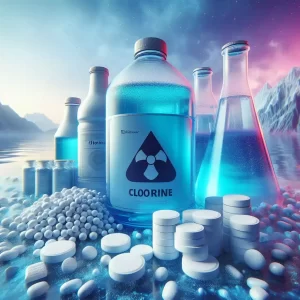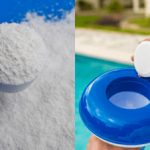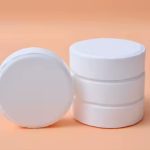Maintaining the water quality of a swimming pool is crucial for ensuring the health and comfort of swimmers. Chlorine, being a commonly used disinfectant in pools, comes in various types, each with its unique characteristics and suitable applications. Understanding the different types of chlorine and their correct addition methods is essential for keeping pool water clear and hygienic. This article will delve into the common types of chlorine used in pools and how each type should be properly added, providing you with a comprehensive and practical guide.

Types of Pool Chlorine and How to Add Them
Chlorine Tablets:
Chlorine tablets, also known as discs, contain chlorine and stabilizing components like cyanuric acid (CYA). Typically, they come in 1-inch or 3-inch disc shapes and are placed in floating chlorine dispensers, pool skimmers, or automatic chlorinators.
Features:
- Slow and long-lasting dissolution, providing continuous chlorination.
- Trichlor chlorine tablets contain up to 90% chlorine, higher than granular forms.
- Affects the pool’s pH and alkalinity.
Advantages:
- Convenient and easy to use, more convenient than granular forms.
- Long-lasting, reducing the need for frequent additions.
Granular Chlorine:
Granular chlorine dissolves quickly in water, aiding in rapid combat against algae and pollutants. It can be directly added to the pool, allowing complete control over the dosage. However, measuring and adding granules can be more cumbersome.
Features:
- Fast dissolution for quick combat against algae and pollutants.
- Usually made of dichlor, with chlorine content around 60%.
Considerations:
- Not suitable for automatic feeders due to rapid dissolution.
- Requires careful measurement during addition.
Liquid Chlorine:
Liquid chlorine or bleach contains the same main ingredient as other pool chlorines (sodium hypochlorite). While relatively inexpensive, it lacks stability, requiring the addition of stabilizers (cyanuric acid) to prevent chlorine breakdown in sunlight.
Features:
- Relatively inexpensive and economical.
- Requires stabilizer addition to prolong chlorine effectiveness.
Considerations:
- High pH and strong corrosiveness.
- Short shelf life, requiring larger chlorine additions; liquid chlorine contains 10-12% chlorine, bleach contains 3-6%.
In summary, different forms of pool chlorine cater to various usage needs, considering factors like convenience, longevity, dissolution rate, and impact on water quality.
How to Add Different Types of Chlorine to the Pool
-
Adding Granular Chlorine:
- Test water quality, measuring alkalinity and pH. Record results, and calculate the dosage for stabilized chlorines independently.
- Prepare materials: a 5-gallon plastic bucket, safety equipment (glasses and gloves), a wooden stirring stick, sodium bicarbonate or soda ash, and a clean measuring cup or bucket.
- Measure and dissolve: Dip the bucket into the pool until 3/4 full, slowly pour the measured chlorine into the bucket.
- Stir until dissolved: Stir until the powder is completely dissolved to prevent cloudiness and potential surface impact.
- Slowly pour into the pool: Pour the completely dissolved solution slowly around the pool perimeter, avoiding direct skimmer pouring.
-
Chlorine Tablets:
- Note the chlorine type, as chloramine and trichlor can also exist in tablet or puck form.
- Use caution with acidity: Trichlor tablet pH is highly acidic (around 2.8) and should not be placed in skimmer baskets. Additionally, chlorine should not be directly added to the skimmer.
-
Liquid Chlorine Addition:
- Determine the exact dose needed in fluid ounces using an app.
- Measure and pour around the pool perimeter or on top of a return inlet pumping water back into the pool.
- Wear protective safety gear, as bleach can damage clothing.
By gaining a deeper understanding of the addition methods for different types of chlorine in a pool, we can effectively maintain water quality, providing swimmers with a fresh and safe aquatic environment. Choosing the right chlorine type and following proper addition steps not only inhibits bacteria and pollutants but also extends the lifespan of pool equipment.




